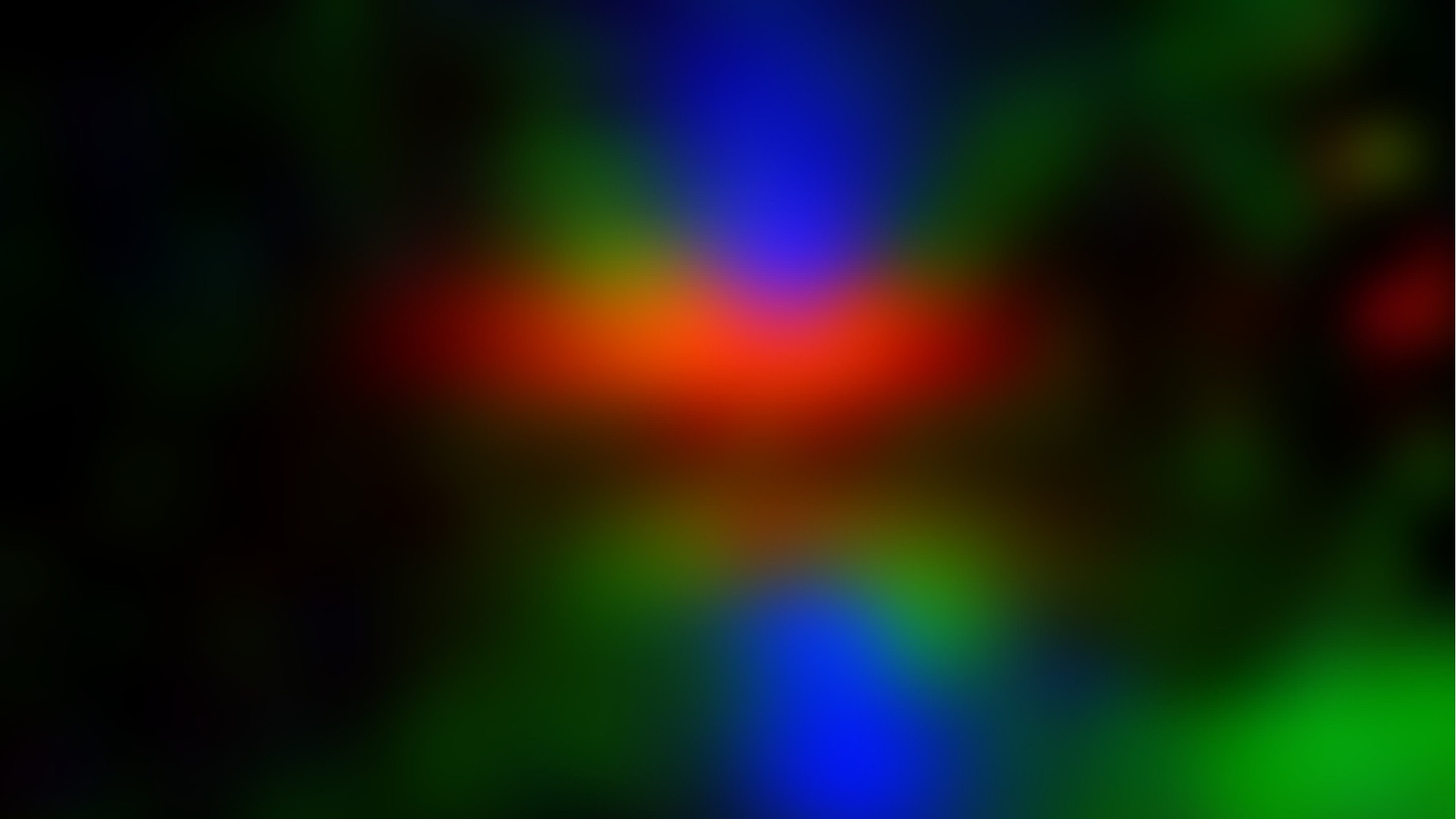James Webb Space Telescope bites cosmic burger to create 1st ice map of planet-forming disk
"The direct mapping of ice in a planet-forming disk provides important input for modeling studies that help to better understand the formation of our Earth."

Astronomers have used the James Webb Space Telescope (JWST) to paint a picture of burger-shaped, planet-forming material around a young star.
The tasty investigation conducted by the James Webb Space Telescope's Ice Age team has led to the creation of the first detailed 2-dimensional inventory of ice in a so-called protoplanetary disk — the type of structure from which our solar system's planets emerged some 4.5 billion years ago.
"The direct mapping of ice in a planet-forming disk provides important input for modeling studies that help to better understand the formation of our Earth, other planets in our solar system, and around other stars," research lead author and Leiden University scientist Ardjan Sturm said in a statement. “With those observations, we can now begin to make firmer statements about the physics and chemistry of star and planet formation.”
Ice might not sound too cool an astronomical discovery (if you'll forgive the pun) but scientists care about the finding because the presence of ice in protoplanetary disks is vital to the birth of planets, and even comets. Ice allows solid dust grains in protoplanetary disks to clump together, forming chunks of material that can gather mass and eventually become planets. Ice can also contain vital molecules like carbon, hydrogen, oxygen and nitrogen that can be sealed in comets and delivered to the surfaces of planets, ultimately becoming the building blocks of life.
Related: James Webb Space Telescope gazes into 'The Brick,' a dark nebula near the Milky Way’s heart
Yet, despite its importance in the formation of our planet and life upon it, a detailed account of ice in the protoplanetary disks of other stars has eluded astronomers — until now, that is.
It's because the water-loaded atmosphere of Earth has obscured our view of these disks; other space-based instruments haven't been able to resolve them in detail either because they are just so faint. However, this isn’t an issue for the high-resolution infrared view of the $10 billion JWST, the most powerful telescope ever placed into orbit that can create detailed observations
Breaking space news, the latest updates on rocket launches, skywatching events and more!
JWST takes a bite out of a cosmic burger
To conduct the study, the Ice Age team trained the JWST on a young star dubbed HH 48 NE, located about 600 light-years away from us. The training occurred as the star passed through the "buns" of this cosmic burger, an illusion created by our side-on view of the protoplanetary disk, and a dark lane of dust passing through its central slices of lettuce and tomato..
As starlight from HH 48 NE passes through the burger-like protoplanetary disk, it interacts with molecules in the disk and is absorbed. Because elements and molecules absorb and emit light at characteristic frequencies, that means they leave their fingerprints on the starlight itself when it reaches the JWST.
In the light from this young star, the astronomers could see the fingerprints of ammonia, cyanate, carbonyl sulfide and heavy carbon dioxide, all in the form of ice. They were also able to calculate the ratio of heavy carbon dioxide to "normal" carbon dioxide, allowing them to make an account of this latter molecule, which is common here on Earth.
One outcome of this particular aspect of the research is the discovery that carbon monoxide ice in the protoplanetary disk may be mixed with less volatile carbon dioxide and water, something that would allow it to stay frozen at closer proximities to the young star than has previously been estimated. That means planets with high carbon content could form in close proximity to their stars.
The first results from the Ice Age JWST project were delivered in 2023, and with this ice inventory under their belts, the team will now observe other protoplanetary disks to see if the same mixtures of carbon-based ice hold. This could lead scientists to modify their ideas of understanding of planetary compositions.
"In 2016, we created one of the first JWST research programs, Ice Age. We wished to study how the icy building blocks of life evolve on the journey from their origins in cold interstellar clouds to the comet-forming regions of young planetary systems," research co-author and Leiden University scientist Melissa McClure said. "Now the results are starting to arrive.
"It’s a really exciting time.”
The team's research is detailed in a paper published on Dec. 6 in the journal Astronomy & Astrophysics.

Robert Lea is a science journalist in the U.K. whose articles have been published in Physics World, New Scientist, Astronomy Magazine, All About Space, Newsweek and ZME Science. He also writes about science communication for Elsevier and the European Journal of Physics. Rob holds a bachelor of science degree in physics and astronomy from the U.K.’s Open University. Follow him on Twitter @sciencef1rst.

